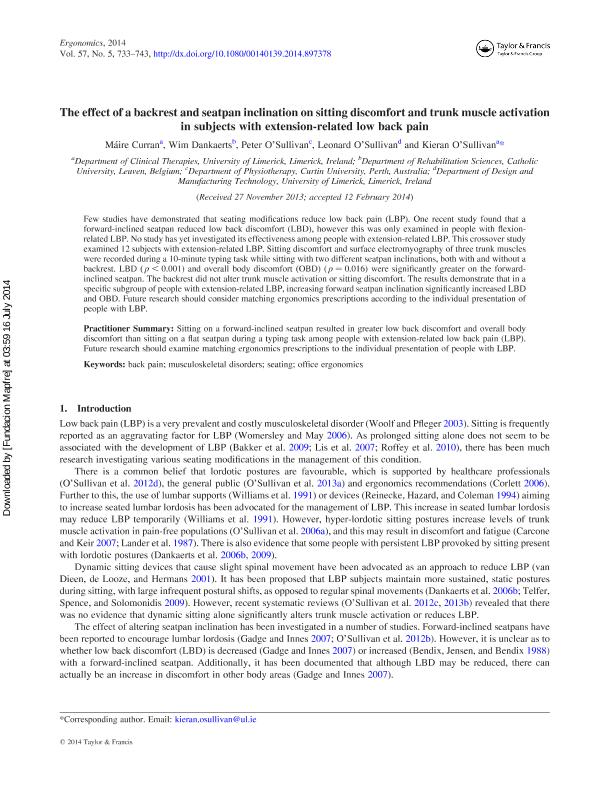The Effect of a backrest and seatpan inclination on sitting discomfort and trunk muscle activation in subjects with extension-related low back pain

Contenido multimedia no disponible por derechos de autor o por acceso restringido. Contacte con la institución para más información.
| Tag | 1 | 2 | Valor |
|---|---|---|---|
| LDR | 00000cab a2200000 4500 | ||
| 001 | MAP20140025633 | ||
| 003 | MAP | ||
| 005 | 20140724124917.0 | ||
| 008 | 140716e20140505esp|||p |0|||b|spa d | ||
| 040 | $aMAP$bspa$dMAP | ||
| 084 | $a875 | ||
| 245 | 0 | 4 | $aThe Effect of a backrest and seatpan inclination on sitting discomfort and trunk muscle activation in subjects with extension-related low back pain$cMáire Curran...[et.al] |
| 520 | $aFew studies have demonstrated that seating modifications reduce low back pain (LBP). One recent study found that a forward-inclined seatpan reduced low back discomfort (LBD), however this was only examined in people with flexion-related LBP. No study has yet investigated its effectiveness among people with extension-related LBP. This crossover study examined 12 subjects with extension-related LBP. Sitting discomfort and surface electromyography of three trunk muscles were recorded during a 10-minute typing task while sitting with two different seatpan inclinations, both with and without a backrest. LBD (p < 0.001) and overall body discomfort (OBD) (p = 0.016) were significantly greater on the forward-inclined seatpan. The backrest did not alter trunk muscle activation or sitting discomfort. The results demonstrate that in a specific subgroup of people with extension-related LBP, increasing forward seatpan inclination significantly increased LBD and OBD. Future research should consider matching ergonomics prescriptions according to the individual presentation of people with LBP. | ||
| 773 | 0 | $wMAP20100019818$tErgonomics : the international journal of research and practice in human factors and ergonomics$dOxon [United Kingdom] : Taylor & Francis, 2010-$x0014-0139$g05/05/2014 Volumen 57 Número 5 - mayo 2014 |

